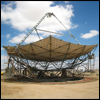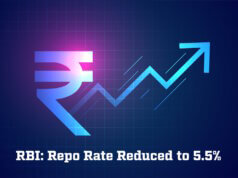The Centre for Wind Energy Technology has selected 3TIER India Private Limited, a wholly owned subsidiary of Vaisala, and the leading source for global renewable energy assessment and forecasting information, for developing a national solar atlas.
C-WET is an autonomous research and development institution under the Ministry of New and Renewable Energy. It has been entrusted through a mission mode project to create and share commercially relevant weather resource information with prospective future financiers and the wider investor community. The project forms part of a wider strategy aimed at ensuring adequate solar radiation data availability for the domestic as well as international business community with focus on those who have identified the Indian market to be of strong solar investment interest.
3TIER was selected for the task following a global tendering process. As per the agreement signed between the company and C-WET, both will collaborate to develop and disseminate critical investor-grade information in order to enable the country to meet its ambitious solar energy capacity targets.
“The collaboration between 3TIER and C-WET will greatly help in evaluating and prioritizing required infrastructure, such as solar generation facilities, storage technology, and transmission lines – in essence, answering where and how to invest in order to harness India’s considerable solar energy potential,” said Dr. S. Gomathinayagam, Executive Director, C-WET.
“The resulting nationwide solar study will help investors and market players clear the first hurdle in the process by filling a critical information gap,” he added.
Under the Jawaharlal Nehru National Solar Mission, India aims to reach 20 GW of grid-connected solar power, 2 GW of off-grid solar power, and 20 million square meters of solar thermal collector area by 2022. Meeting these targets will require long-term market certainty in order to attract the necessary inward investment of capital.
“Long-term certainty is not solely generated by strong, stable government policy. It also requires long-term certainty in the resource. Prospective developers and investors need information to quickly assess whether solar projects will be commercially viable and able to meet energy production expectations. A large part of ensuring project feasibility is optimal siting. This involves appropriately sizing the system to match the available energy resource, evaluating proximity to transmission and major centers for energy demand, as well as ensuring that the infrastructure is equipped to manage the influx of energy from a variable source. The forthcoming solar atlas will provide a detailed view of India’s solar power resources, which while vast, vary significantly both across geography and over time,” said Nikhilesh Singh, Managing Director of 3TIER India Private Limited.
3TIER pioneered the use of satellite technologies in calculating pre-construction solar energy estimates. Its state-of-the-art satellite methodology analyzes the range of factors that impact surface irradiance conditions, such as cloud movement, air quality, and cyclical events like cyclone seasons and monsoons.
The solar atlas will provide a clear understanding of weather anomalies along with spatial and hourly solar irradiation variability and include a series of monthly solar resource maps covering the entire country and long-term solar resource and meteorological datasets at 115 locations.
“All information will be regularly updated to include the most recent months and will be validated by C-WET’s Solar Radiation Resource Assessment stations spread across the country,” said Dr. G. Giridhar, Director of the SRRA Mission Mode Project at C-WET.











